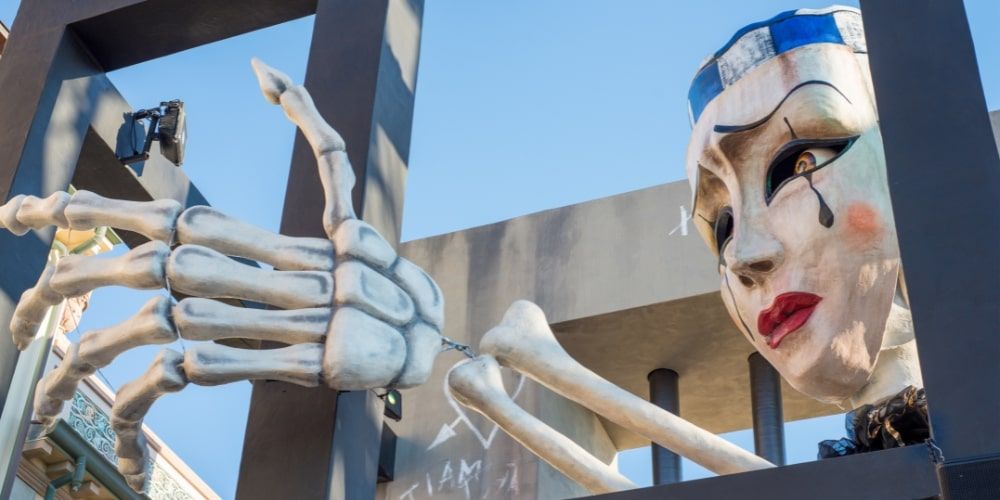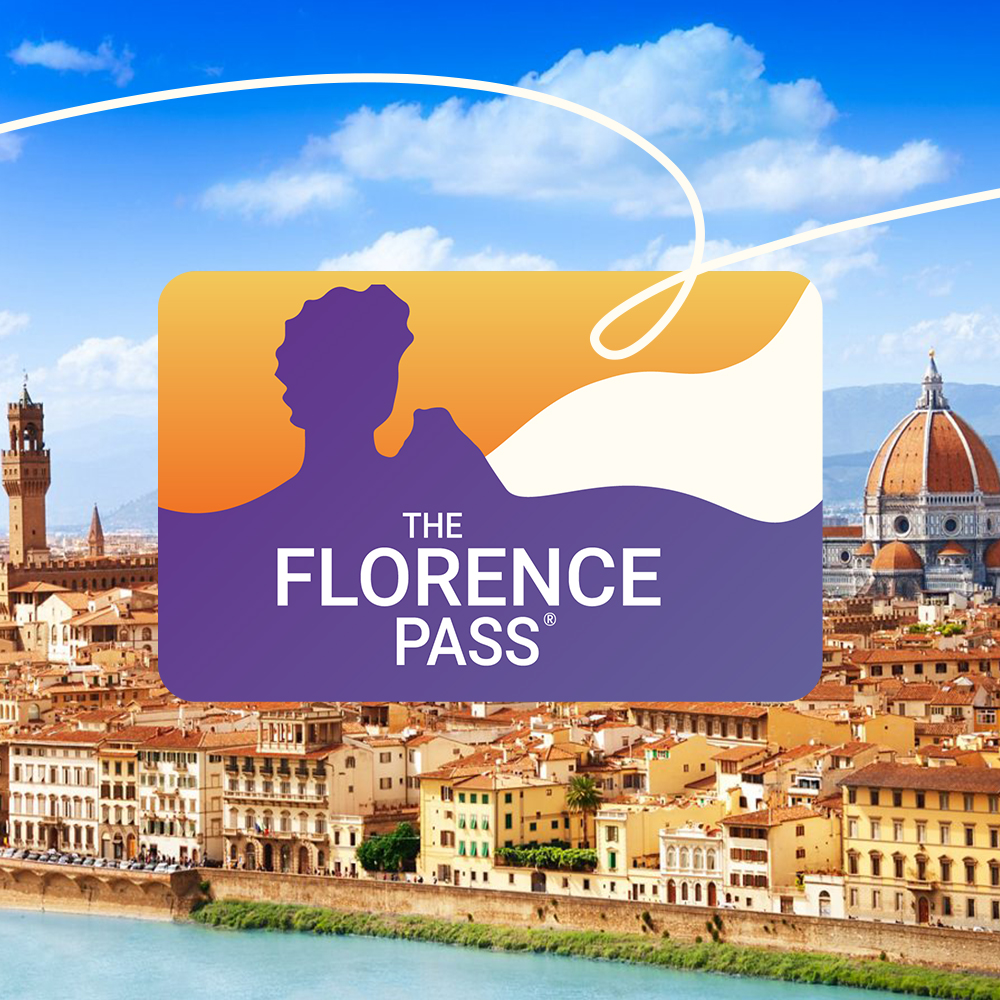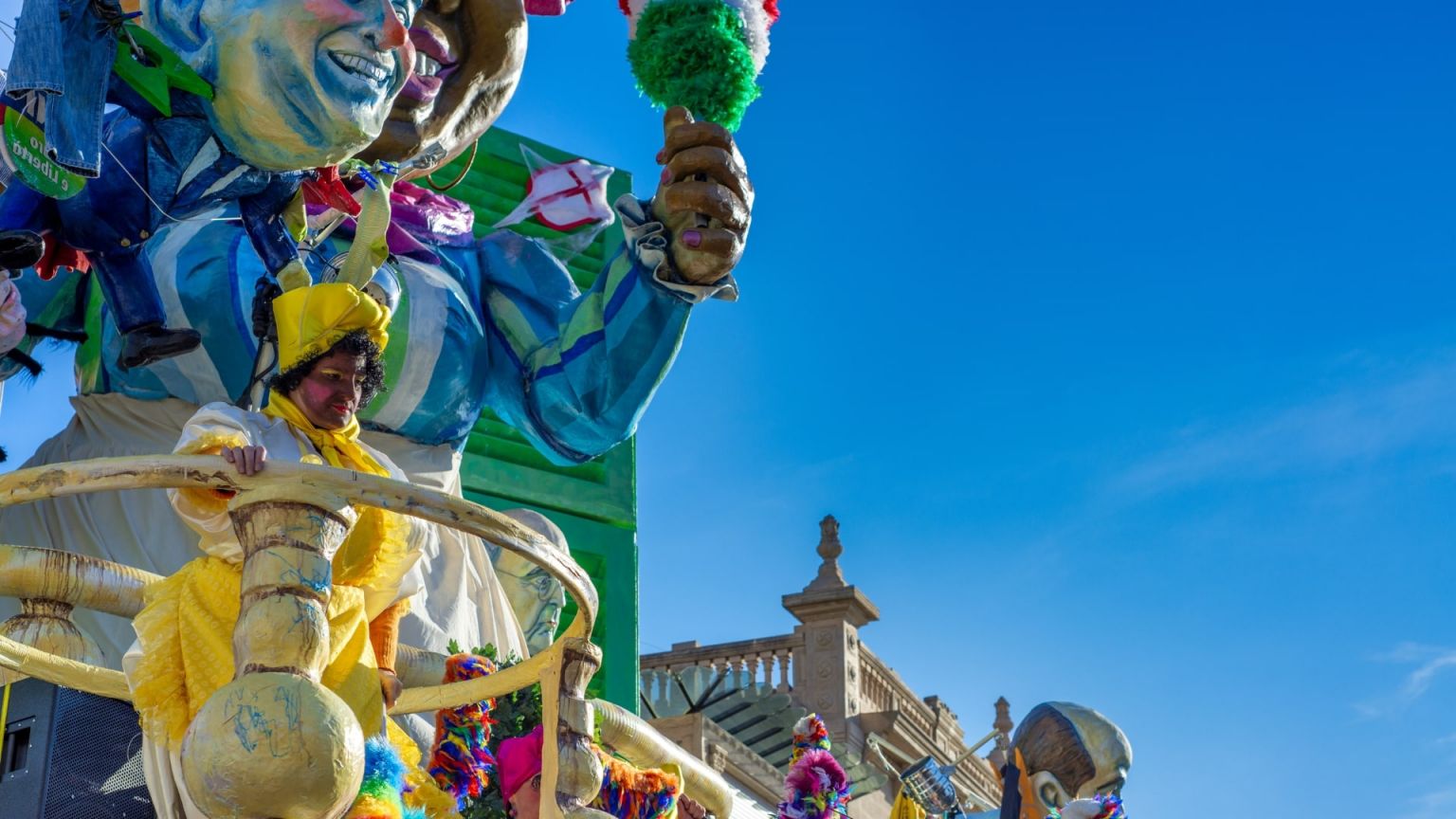From February 8 to March 4 2025, the 100th edition of the Viareggio Carnival will take place: a spectacle you have to see at least once in your life, which you will want to see a second time, a third, and so on. The real stars of the event are the large paper-mâché allegorical floats that parade along the seaside boulevards and the town's promenade. They talk about life, representing it in a satirical and irreverent way: they speak about politics and current affairs in a festive atmosphere of music, dancing, masks and thousands of visitors of all ages.
The result is a big, colourful, noisy and chaotic festival that is not afraid to make fun of the world we live in, and speaks of the great themes of our contemporary world through ridiculous and grotesque representations, with the convinction that we all need fun. The posters of each edition, since 1925, are always full of colour, cheerful, sometimes exaggerated, as if to tell us that if you don't stop taking yourself seriously, at least at Carnival, you never will. Let us discover the Carnival that, born in 1873, has become one of the most spectacular festivals in Italy and the world.

The history of the Viareggio Carnival

It was 1873 when the high society youth of Viareggio had the idea of staging a parade to celebrate Mardi Gras. From then on, the fame of the Carnival in this Tuscan town grew in parallel with that of its allegorical floats, which were increasingly majestic, built in wood, scagliola and jute by the 'Maestri Carristi'.
In 1921, the first official song, which is now the event's anthem – 'Coppa di Champagne' - was born, and in the same year, a band enlivened one of the floats with its music for the first time; in 1923, the Pierrot was the first wagon to move its head and eyes and, two years later, the papier-mâché technique made it possible to build increasingly imposing constructions.
After the stop of the two world wars, the Carnival restarted; in 1954, it was broadcast on the newborn RAI (Italian Radio Television). Four years later, its fame reached farther and farther afield thanks to Eurovision.
In this way, the Viareggio Carnival became international, an event that attracts audiences worldwide and offers a month of celebrations, parades and various events.
To get around the city at your own pace, a convenient and efficient car rental service is available, choosing which you can travel independently.
Carnival in Tuscany: here are the most beautiful in the region

In addition to Viareggio, Tuscany offers other Carnivals to be noticed. Let us see them together.
The Foiano della Chiana Carnival, in the province of Arezzo, is ancient: its first edition dates back to 1539. Here, during the Sundays of the Carnival period, four large allegorical floats parade in front of a jury, accompanied by masks, music and dancing. The event's patron is King Giocondo, who opens the festival every year and sanctions its end with his death.
In Castiglion Fibocchi, in the province of Arezzo, what appears to be the oldest carnival event in Tuscany is staged: the Carnival of the Sons of Bocco. Every year, the medieval village is transformed into a giant open-air theatre, thanks to more than two hundred participants with their faces covered by papier-mâché masks that parade through the streets.
The town of San Gimignano, a UNESCO World Heritage site in the province of Siena, also hosts a large carnival festival full of colour. The parade of floats and masks gives this enchanted medieval jewel an unusual atmosphere.
Also to be noticed is the Carnival of Follonica, in the province of Grosseto, born in 1910. Here, each 'contrada' parades with its allegorical float and various prizes are up for grabs: in addition to the best float, the Carnival Queen is crowned. The event ends with the 'burning of the King', a giant papier-mâché mask burnt on the beach in front of Piazza XXV Aprile.
Very special, with a charm of bygone eras, is the Calenzano Medieval Carnival. Figurantes and flag-wavers parade through the streets of the centre to the castle of Calenzano Alto, where a challenge between the counties is staged. Again, the event ends with the burning of King Carnival.
Participate in an engaging tour to discover the enchanting treasures of Siena, Pisa, and San Gimignano with a ticket by Visit Italy.
Discover moreThe symbolic masks of the Viareggio Carnival: Burlamacco and Ondina
Every self-respecting event has its protagonists: Burlamacco and Ondina both appeared for the first time on a poster in 1931 and they always stayed together, as the symbolic masks of the Viareggio Carnival.
Burlamacco was born in 1930 from the imagination of the painter, graphic artist and set designer Umberto Bonetti and, from his own pen, the following year Ondina came to life, in the guise of the typical summer beach lady. The artist wanted to create a character that would encapsulate the two souls of Viareggio life: Carnival and summer. This is why Burlamacco looks like this: he is inspired by the masks of the “Commedia dell’Arte” but is dressed in a chequered suit that picks up the white and red of the beach umbrellas on the coast.
So great is the importance of Burlamacco and Ondina that in 1998 the 'Burlamacco d'Oro', a prize awarded by the Carnival Foundation, was instituted. This is the award that Viareggio gives every year to men and artists from the world of entertainment and communication, while for women in the same sector there is the 'Ondina d’Oro' award.
How are the Viareggio Carnival floats made?
Wondering how the Viareggio Carnival floats are made? Those mammoth structures are made of papier-mâché, up to 20 metres high and about ten metres wide, and they advance through the crowds on the Viali a Mare to amaze them with their scenic impact, their movements and their colours.
All of this, in reality, was created from a few simple things: clay models, plaster casts, sheets of newspaper and a glue made of water and flour, as well as a lot of skill and imagination; a few ingredients which, when put into the right hands, create something extraordinary.
There are more than 25 craftsmen's companies (and more than a thousand people at work) in which the master builders hand down this art from generation to generation, hoping each year to win the first prize awarded by the jury.
The Citadel of Carnival and the Carnival Museum
The Carnival Citadel is where the floats take shape and life: inaugurated in 2001, it is the largest themed area in Italy dedicated to masks and includes workshops and hangars as well as a large collection of historical documents. Inside, there is the Viareggio Carnival Museum, where the statue of Burlamacco welcomes visitors who can admire the models of the floats that have won prizes in recent editions and discover, among other things, the stages involved in making papier-mâché works and then have fun creating small artefacts.
A stroll through the city: between the vitality of the waterfront and Art Nouveau villas
Viareggio actually deserves to be known for its beauty as well as its Carnival: it is a famous seaside locality in Tuscany with historic Art Nouveau buildings and examples of Art Deco.
The pedestrian and cycle path that follows the seafront, Passeggiata Margherita, is the richest in this respect, and here, amidst the bars, ice-cream parlours and crowded restaurants, you can admire a succession of fine architecture from the early 20th century; among these, the Gran Café Margherita with its two turrets topped by yellow and green tiled domes will certainly catch your eye. The café was once Viareggio's most elegant establishment, frequented by high society and the maestro Giacomo Puccini, and now houses a restaurant, cafeteria and bookshop. Also in the area near the seafront we find the Hotel Liberty, the Bagno Balena with its vintage portal, the Clock Tower and the statue of Burlamacco.
Villa Argentina, one of the most beautiful examples of Art Nouveau architecture in Italy, and Villa Paolina, home of Pauline Bonaparte, are also worth a visit. The former belonged to a wealthy landowner of Argentine origin named Francesca Racca Oytane and offers paintings by great artists of the time and gilded stucco decorations on the ceiling and walls, as well as precious floors such as the black Belgian marble floor of the ground floor hall.
Villa Paolina was the home where Pauline Bonaparte received her lover; today it houses the Civic Museums and some important offices, but its flats, used for hosting exhibitions, can still be visited. The building is a beautiful example of neoclassical style and its layout offers a new interpretation of the Roman domus, with a beautiful colonnade facing the sea and all the bedrooms and lounges facing the beach.
Viareggio Carnival 2025: the programme
This year the Viareggio Carnival will be 100 years old, and to celebrate it we start with the poster. In fact, for 2025 a reworking has been planned that pays homage to the first historical poster, the one from 1925, which at the time was created by Guglielmo Lippi Francesconi, an artist but also a doctor.
The program of the typical Corsi Mascherati can already be seen on this very magnificent poster, with a list of the most important events planned, which start on February 8 and end on March 4.
The Corsi Mascherati are nothing more than the famous paper mache floats that will parade on the Viali del Mare. To attend these incredible parades, one must purchase a ticket, which can be taken either on site or purchased online.
Here, then, is the program.
On Saturday, Feb. 8, there will be the first opening night masquerade course with a fireworks display at the end. Sunday, Feb. 16, will be the second masked course at 3 p.m. The following Saturday, Feb. 22, will be the third night masked course at 5 p.m. Thursday, Feb. 27, will be followed by the fourth masked course, also at night, starting at 6 p.m. Sunday, March 2, will be the penultimate masked course, at 3 p.m. Tuesday, March 4, will be the last masked course, the sixth, with winners announced.
“On the stage of the world we are but poor actors, and sometimes it is useful to be able to disguise our sad roles.”
Where to park at the Viareggio Carnival
Do you know where to park in Viareggio during Carnival? With the start of the Corsi Mascherati, the Viali a Mare and some streets will be closed to traffic.
We advise you to download the official 'Mobilità Versilia' app, where you will find all the parking areas, some of which can be booked in advance.
Here is a map of the city's parking areas.
About the author
Written on 15/12/2023




Chiara Musino
The Viareggio Carnival in Tuscany is among the most spectacular in the world. We discover its history, its iconic masks, and the 2025 programme.